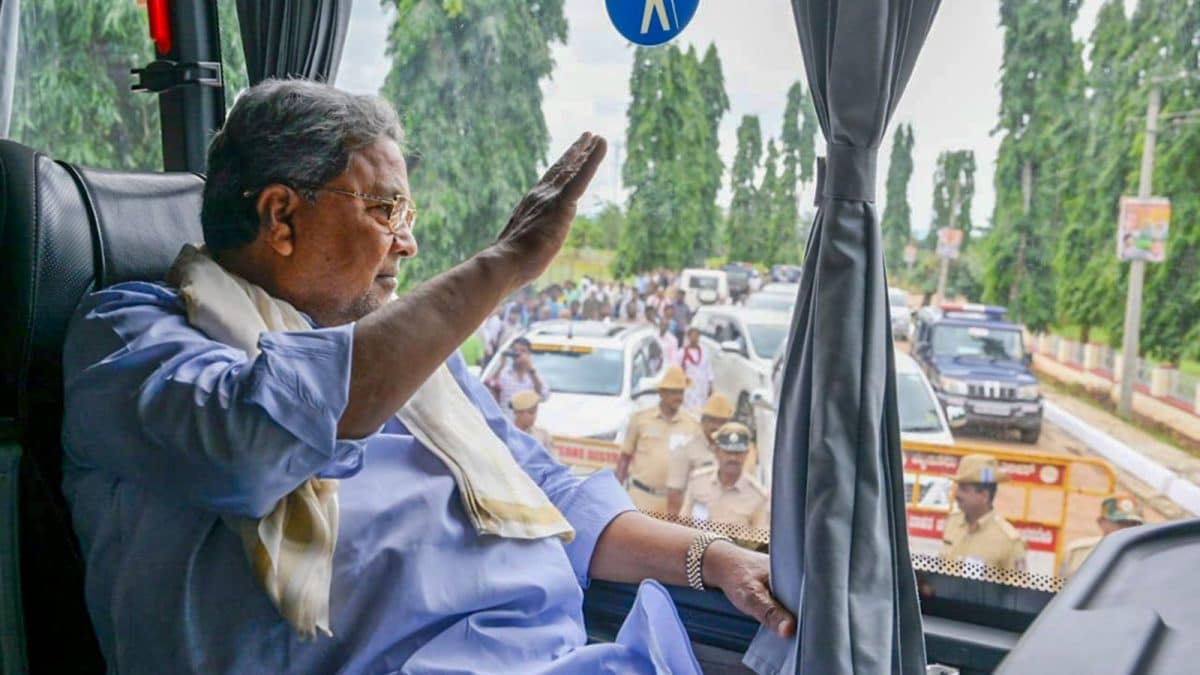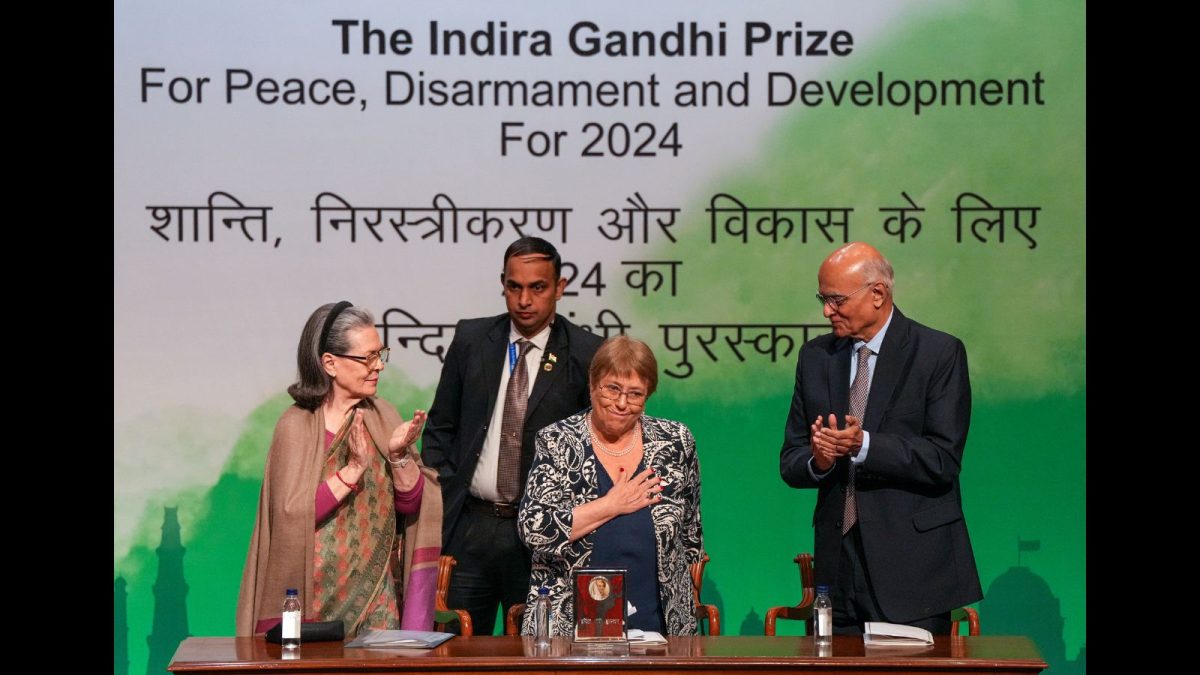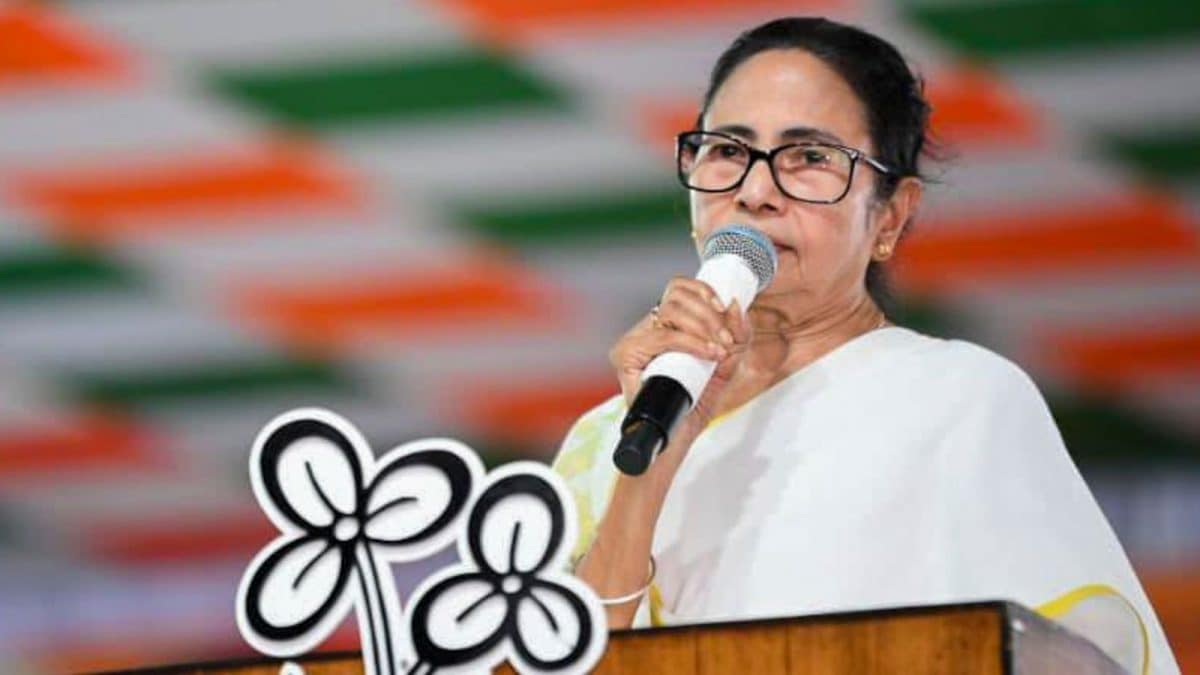Last Updated:
The self-assured, battle-hardened chief minister of 2013-18 has returned as a man trying to stretch his political life while navigating a forced partnership

Whether Siddaramaiah rises above this halfway-mark turbulence or gets trapped in it will decide how Karnataka remembers him. (PTI)
When Siddaramaiah returned to the chief minister’s chair in May 2023, it wasn’t just a comeback. It was an old warhorse walking into the arena again, determined to prove that the legend of 2013-2018 was a choice that people made under his leadership to give the Congress a chance, and that he could still command Karnataka’s politics on his own terms.
Siddaramaiah once governed like a man with nothing to lose. Today, he governs like a man with everything to protect—his legacy, his position, his place in history. Whether he rises above this halfway-mark turbulence or gets trapped in it will decide how Karnataka remembers him: as the chief minister who matched the aspirations of the people, or the chief minister who almost did.
Ten years earlier, his first full term had been defined by stability, welfare expansion and a carefully built AHINDA consolidation. His second term is an endorsement of his welfare policies, but also a governance marred with controversies.
In the first term, there were no major scams, no open warfare within the Cabinet, and the administration ran with the predictability of a chief minister who had nothing to fear and everything to gain. By 2018, Siddaramaiah had become the first chief minister after Devaraj Urs to complete a full five-year term, and that achievement had given him an aura few in Karnataka politics enjoy.
The second innings, which have reached the halfway mark, have been a different story. The same man, the same party, the same confidence—but a government that seems perpetually on the defensive, weighed down by internal rebellion, and a series of self-inflicted wounds while firefighting the Opposition.
“Our administration, implementation of schemes and governance has been very good. While we have been found wanting in handling certain crises, which government does not have one? It is the efficiency and leadership of Siddaramaiah-ji and his political astuteness that has shown how the Congress governance has delivered to the people every promise made during the election. Don’t compare two regimes, each day, month and year is a learning curve for all,” said a minister from his government.
If the first term was about building a legacy, this one has been about protecting it. And somewhere in between, the Siddaramaiah who was once seen as the most grounded administrator of his generation has found himself cornered by controversies, dragged into bureaucratic chaos and forced to fight daily battles for political relevance.
“There is a marked difference. This time it is a more subdued, less pushy one who is seen to be concentrating on welfare schemes and administration, but image management has taken a hit. In the management of how the government looks, the issues could have been handled better as the power tussle has made the Congress look more like a split party, when it is not,” said a Congress leader who did not want to be named.
There is no denying that the five guarantee schemes became the Congress’ most powerful political tool—not only implemented in Karnataka but used as a format to pitch for elections in states that subsequently went to elections like Telangana, Madhya Pradesh, Punjab and even Bihar. But the point remains that Siddaramaiah was, and is, hailed as a welfare man. Yet this time, his rule was marred by constant tussle and attacks and counter-attacks over the transfer of power.
There is no doubt that DK Shivakumar still aspires to sit on the chief minister’s seat and Siddaramaiah, who said that he will complete five years, then began to say that he will be there as long as the high command decides. This was not the Siddaramaiah of the previous regime, who would not have made statements like that or allowed anyone to steal his star power.
“Let’s get it straight. As a leader completes decades, he also matures in the way he looks at issues, governance, the management of the party and other issues. But then this time the Congress has seen mini-rebellions from factions, which could have been quelled right at the start,” explained a local leader from Mysuru.
In the first term as chief minister, in 2013-18, Siddaramaiah’s AHINDA platform gave him a clear identity. In the second term, 2023, the guarantees gave him a narrative. They were bold, disruptive and designed to cut across caste loyalties and class anxieties. Free bus travel for women, subsidised food, free electricity, direct cash to women heads of households—these schemes were not just welfare, they were electoral engineering. For months, he basked in the glow of having delivered what he promised, and politically, the guarantees gave the Congress a shield every time the BJP tried to corner them.
But the same guarantees also became the government’s Achilles’ Heel, something Siddaramaiah didn’t face during his first term. The criticism, especially from the Opposition, is that the government is broke, development is stuck, tenders are not being cleared, bills are not being paid and departments are starved of funds.
Siddaramaiah was the unquestioned leader of the government. His Cabinet may have had egos, factions and regional satraps, but nobody challenged his authority openly. This time, the shadow of power-sharing with DK Shivakumar has haunted Vidhana Soudha from the first day. The 2.5-year “deal”—denied, reaffirmed, attacked, whispered and debated for months—has made the government look fragile even when it isn’t. MLAs loyal to both camps have made reckless statements, ministers have teased leadership changes, and the high command has allowed the confusion to fester.
Congress MLAs whisper that the administration has slipped into a welfare-only mode and governance is seen wanting attention. The Siddaramaiah of 2013-18 better balanced welfare with capital expenditure. The Siddaramaiah of 2023-25 has struggled to convince even his colleagues that the state isn’t drowning financially. His one economic advisor has made statements saying his guarantee schemes were bleeding the government.
Siddaramaiah has many times reiterated that his government has fulfilled 242 out of 593 promises in two years and is delivering “good governance”. Many of his supporters agree.
“But there is a difference between the previous Siddaramaiah and this one. In that period, he had sole control of the government. But this time the power is shared, and there have been hits and misses,” explained a senior leader of the party. Even senior Congress leaders pushing for a Cabinet reshuffle on performance grounds say there has been a change in Siddaramaiah’s style of governance.
The controversies surrounding the embezzlement of taxpayers’ money at the Maharshi Valmiki ST Development Corporation, the MUDA scam, the ‘diversion’ of SC/ST funds and the government constantly firefighting and “clarifying its blunders”, leaving the MLAs to speak and then issuing a gag order, which still seems to have no effect, clearly has dented this second term. Many in the party believe that the Siddaramaiah–Shivakumar tussle “could have been avoided” in the way the Grand Old Party handles issues, especially when the final call is taken from the AICC HQ in Delhi.
The other sharp difference between the two eras is the internal turbulence. The Siddaramaiah of 2013-18 never had to prove he deserved the job. The Siddaramaiah of today keeps insisting he will complete the full five years “if the high command permits” and that very sentence exposes the insecurity this second term is built on. His deep desire to match Devaraj Urs’ record as Karnataka’s longest-serving chief minister is no secret. In his first term, the legacy built itself. In this one, Siddaramaiah is fighting to hold it together.
Bureaucratic decisions are delayed, bids are stuck, the BBMP remains leaderless despite the fancy rebranding to the Greater Bengaluru Authority, potholes continue to scar the IT capital, garbage piles up as if nothing changed, and ordinary citizens see a government that reacts only after things blow up. The farmer who set himself on fire outside the Mandya DC office, the sugarcane protests that spiralled for nine days before intervention, the chaos in mango procurement earlier this year—all point to a system that has lost administrative sharpness.
And then there are the scandals. In 2013-18, Siddaramaiah had a clean record untouched by major corruption charges. Ministers could be removed without drama, and his administration was largely respected for its procedural discipline. In contrast, the present government has been hit by controversies that have not only embarrassed the chief minister but also punctured the “clean governance” plank the Congress ran on. The Valmiki Corporation embezzlement scandal forced a minister to resign; the MUDA site-allotment controversy reached Siddaramaiah’s doorstep; contractors revived allegations of commission demands; and the BJP sharpened its narrative that the Congress was no different from the government it had attacked for “40 per cent corruption and now it is 80 to 200 per cent corruption”.
The most stinging blow came not from the Opposition, but from within. Ministers, MLAs and senior leaders publicly calling the government slow, some attacking Siddaramaiah’s governance, others speaking of a change of guard—something absolutely unimaginable in Siddaramaiah’s first term. Back then, he projected strength. Now he projects survival. Of the fittest.
And yet, it is not a story of absolute collapse. In this term too, Siddaramaiah has pushed politically risky but ideologically bold decisions, especially the caste census—one that he started in his first term, which went into cold storage, but it was only a leader like Siddaramaiah who could revive it and start afresh.
He has revived the debate that has defined backward-class politics in Karnataka for a century. The report, whenever tabled, will shake the state’s social equations and redraw political calculations. Only Siddaramaiah could have taken that call, because only he has carried forward Devaraj Urs’ legacy with conviction. The courage of this decision mirrors his first term, where he introduced AHINDA as a political philosophy and stood by it.
But he cannot escape the fact that his government’s narrative today is built on firefighting—from potholes to price hikes, from MLAs demanding reshuffles to ministers hinting at leadership change, from opposition attacks to internal murmurs that the administration lacks direction. The strong, self-assured, battle-hardened chief minister of 2013-18 has returned as a man trying to stretch his political life while navigating a partnership that was forced on him by electoral arithmetic.

Rohini Swamy, Associate Editor at News18, has been a journalist for nearly two decades in the television and digital space. She covers south India for News18’s digital platform. She has previously worked with t…Read More
Rohini Swamy, Associate Editor at News18, has been a journalist for nearly two decades in the television and digital space. She covers south India for News18’s digital platform. She has previously worked with t… Read More
November 20, 2025, 15:24 IST
Read More








